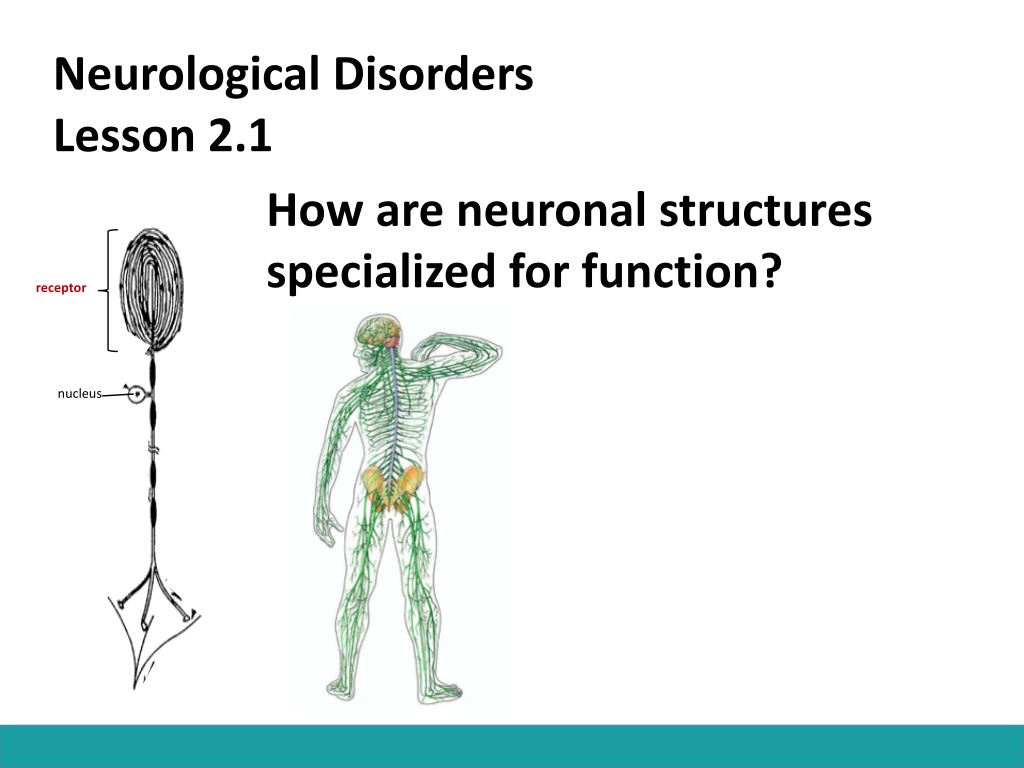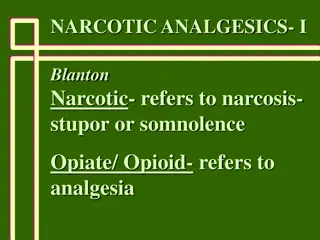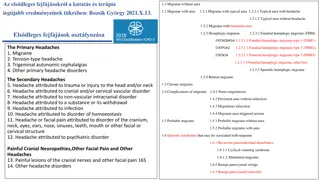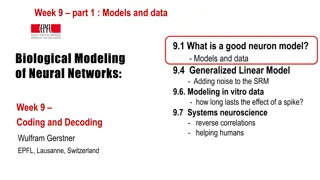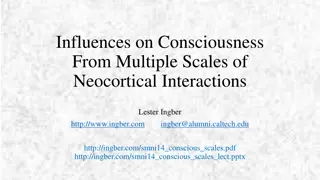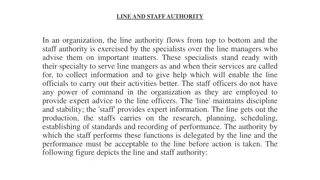Understanding Neuronal Specialization and Functions
Explore how neuronal structures are specialized for functions, compare different types of neurons, learn about the functions of neurons, and delve into the processes of receiving, processing, and sending signals within neurons. Discover the unique features of axons and synapses, and understand how these components contribute to the intricate workings of the nervous system.
Download Presentation

Please find below an Image/Link to download the presentation.
The content on the website is provided AS IS for your information and personal use only. It may not be sold, licensed, or shared on other websites without obtaining consent from the author. Download presentation by click this link. If you encounter any issues during the download, it is possible that the publisher has removed the file from their server.
E N D
Presentation Transcript
Neurological Disorders Lesson 2.1 How are neuronal structures specialized for function? receptor nucleus
Are all neurons created the same? Compare and contrast the neurons drawn below.
Neurons have many functions What has to happen to be able to read The Cat in the Hat?
Neurons are Cells Nucleus stores DNA Mitochondria supplies energy Ribosomes synthesizes proteins Endoplasmic reticulum modifies proteins Golgi apparatus packages and directs proteins to proper locations in cell
Neurons Receive Inputs From the environment via specialized receptors 3. Sensory neuron in eye 1. Sensory neuron in skin 2. Sensory neuron in ear receptors receptor receptors nucleus nucleus nucleus
Neurons Receive Inputs From other neurons via dendrites Dendrites Dendrites Dendrites Cell body Cell body Cell body
Neurons Process Inputs Through the initial segment (determines whether or not to send a signal) Dendrites Cell Body Initial Segment
Neurons Send Signals Through the axon (electrically) and then the synapse (chemically). Dendrites Axon Cell Body Initial Segment Synapse
Axons Vary in Length Longest Axon is longer than 3 feet and reaches from the spinal cord to the big toe. The shortest are just millimeters.
The Axon Sends signals electrically Axon + + + + - - - - Axon s Lipid Bilayer
The Synapse Sends signals chemically Presynaptic cell Neurotransmitters Postsynaptic cell
Neurons Send Signals To other neurons To muscles/glands
Parts of the Neuron Dendrites Axon Cell Body Initial Segment Synapse Presynaptic cell Postsynaptic cell
General Neuronal Pathway 1. Sensory Neuron is activated through one of the senses. 2. The message gets relayed to an interneuron found somewhere in the brain or spinal cord. Interneurons will Interpret the message from the sensory neuron. 3. Then the message gets passed to a motor neuron to carry out the action decided by the interneuron. Ex. Move a muscle, secrete a substance.
Create a Neuronal Pathway Group 1: It s Monday morning and Joe hears the beeping of his alarm clock and reaches out to hit the snooze button. Model the neurons and their connections required to hear the alarm clock and hit the snooze button. Group 2: Joe realizes he is hungry when he smells his dad making breakfast (bacon and eggs). His mouth starts to salivate and his stomach starts to grumble. Model the neurons and their connections required to smell breakfast and have the reaction of mouth salivating and stomach grumbling. Group 3: As Joe opens the door to leave for school, he realizes it s colder than he thought. He walks back inside to get his warmer coat. Model the neurons and their connections to feel that it s cold and walk back to get a coat. Group 4: While on the T, Joe reviews for a Spanish quiz. He looks at flashcards with vocabulary to test his memory. Model the neurons and their connections to see the flashcards and test language memory. Group 5: At basketball practice, Joe warms up by practicing his free throw. Model the neurons and their connections required to shoot a basketball remember that you use both your arms and your legs. Group 6: Joe finishes basketball practice. He reaches for a Gatorade and takes a sip. Model the neurons and their connections to reach for a Gatorade and taste its flavor.
Are all neurons created the same? Why not? Bipolar cell from retina Neuron from cortex Neuron from olfactory bulb Santiago Ramon y Cajal Motor neuron from spinal cord
